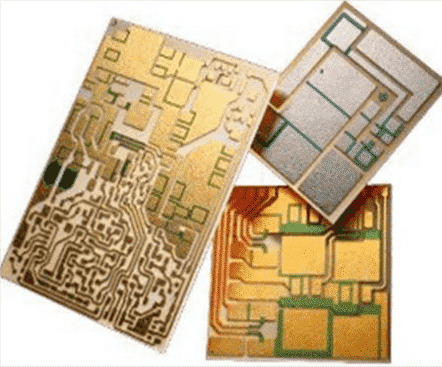About us
FASTPCBA Co.,Ltd
-
 Building 1, Senyang Electronic Technology Park, Guangming High-tech Park, Yutang Street, Guangming District, Shenzhen City.
Building 1, Senyang Electronic Technology Park, Guangming High-tech Park, Yutang Street, Guangming District, Shenzhen City.
-
 F:86-13418481618
F:86-13418481618
-
 pcba13@fastpcba.cn
pcba13@fastpcba.cn
 date:2019-06-25 10:41:00
date:2019-06-25 10:41:00
PCB selection and usage characteristic of composite copper clad laminates
The fabric and core of the substrate used in the composite substrate printed board are composed of different reinforcing materials. The CCL is between the paper-based copper clad laminate and the epoxy glass fiber clad copper clad in mechanical properties and manufacturing cost. The copper-clad board substrate used for the composite base is mainly a CEM (Composite Epoxy Material) series, of which CEM-1 and CEM-3 are the most representative.

(1) CEM-1 CCL. It is improved on the basis of FR-3. FR-3 is a composite of paper-based impregnated epoxy resin and copper foil. CEM-1 is a paper-based impregnated epoxy resin, then double-sided composite a layer of glass fiber cloth, and then combined with copper foil hot pressing, so CEM-1 structure is more than two layers of glass fiber cloth than FR-3 Therefore, the comprehensive properties of CEM-1 such as mechanical strength, moisture, flatness, heat resistance and electrical properties are superior to paper-based CCL. Therefore, CEM-1 can be used to make PCBs with high frequency characteristics, such as TV tuner, power switch, ultrasonic equipment, computer power supply and keyboard, as well as TV, recorder, radio, electronic equipment, office Automated settings. CEM-1 is the ideal replacement for FR-3.
The CEM-1 CCL has the following features.
1 The main performance is better than paper-based copper clad laminates.
2 excellent machining processing performance.
3 The cost is lower than that of glass fiber cloth.
CEM-3 CCL. It was improved from FR-4. CEM-3 is structurally immersed in epoxy resin with glass mat (also known as non-woven fabric), and then laminated with glass fiber cloth on both sides, and then composited with copper foil and hot pressed. It differs from FR-4 in that the replacement of most glass fiber cloths with glass mats increases the degree of "cut" in mechanical properties. Usually CEM-3 is manufactured into double-sided copper clad laminates. CEM-3 sheets are easier to process than FR-4 in drilling, because the glass mat is structurally looser than glass fibers. Punching is also superior to FR-4.
The shortcomings of CEM-3 compared to FR-4: CEM-3 thickness and accuracy are not as good as FR4; after PCB soldering, the degree of distortion is also higher than FR-4.
In short, CEM-3 is similar to FR-4 and can be used in a variety of electronic products to make PCBs, especially have great advantage in price.
The CEM-3 CCL has the following features.
1 Basic performance is equivalent to FR-4 CCL.
2 Excellent machining processing performance.
3 Conditions of usage are the same as FR-4 CCL.
4 Cost is lower than FR-4 copper clad laminate.
Some CEM-3 products are superior to the general FR-4 products in terms of tracking resistance (CTI), dimensional accuracy and dimensional stability of the board. The usage of CEM-1, CEM-3 instead of FR-4 substrate to manufacture double-sided PCB has been widely used in Japan, Europe and the United States and other countries and regions.
 Building 1, Senyang Electronic Technology Park, Guangming High-tech Park, Yutang Street, Guangming District, Shenzhen City.
Building 1, Senyang Electronic Technology Park, Guangming High-tech Park, Yutang Street, Guangming District, Shenzhen City.
 F:86-13418481618
F:86-13418481618
 pcba13@fastpcba.cn
pcba13@fastpcba.cn